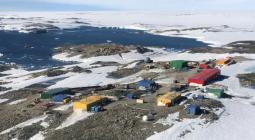Antarctica as a Solar Hub: Possible or Pipe Dream?
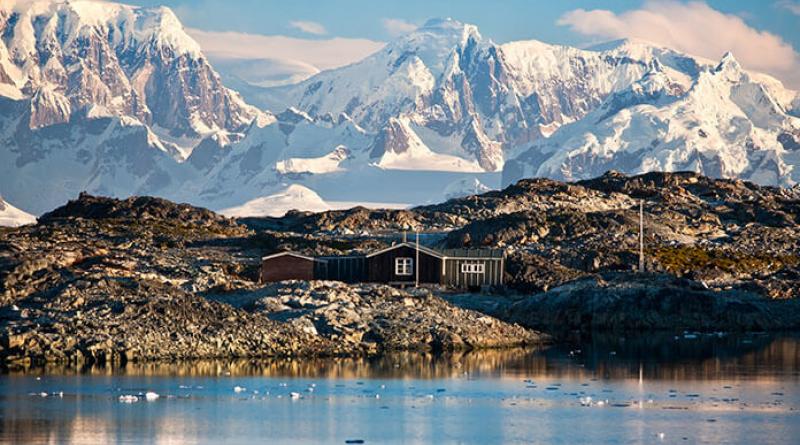
When it comes to ideal spaces for huge solar installations, there are common factors that make a location appealing. Lots of space and lots of sunlight are always desirable, so too the ability to build on land cheaply, as obviously nobody is going to see a giant solar farm installed in the middle of Manhattan, Tokyo, or Paris anytime soon where property prices are among the most expensive in the world. By these metrics then, Antarctica’s abundance of open space, a yearly average of six months of constant daylight, and mile after mile of non-privately owned land theoretically make it a locale of promise for large solar installations in future backed by public entities.
To optimists, Antarctica one day playing host to a large solar farm would evidence both the emerging capabilities of the technology and the capacity of humanity to utilize the southernmost continent in a new way. But unquestionably many hurdles also exist today, and could well remain in place through the years and decades to come that hinder the uptake of solar technology. Some current barriers are simply the result of existing technological limitations, while others are owed to the limitations politics and international rivalries can place on scientific progress.
Of course, any consideration of a large solar installation in Antarctica is audacious. But the very nature of the southernmost continent and any human interaction with it has always required boldness and readiness to pioneer. It’s in this spirit this unlikely idea must be considered critically, and in turn, the question answered: is mass solar power uptake in Antarctica actually possible or a pipe dream?
Antarctica in the international system
Any consideration of this issue in the present must necessarily acknowledge some events of the past. In 1959 the Antarctic Treaty was signed by the 12 countries, following successful negotiations in the years immediately beforehand, that sought to strike an accord among nations who held territorial claims that’d prevent an outbreak of future conflict, and essentially see the use of Antarctica confined to scientific purposes. But as discussed further below, despite this, within mere decades from now a seismic shift in the geopolitical standing of Antarctica could occur.
In the meantime, the world’s demand for solar and energy resources as a whole is only set to increase. It’s here the potential of Antarctica could loom large over the future of international politics for better or worse.
A snapshot of Antarctica’s solar story
Although there is no permanent Antarctic population, it’s held there are always between 1,000 to 5,000 visitors depending on the time of year. These small communities have been very busy in recent years growing the presence of solar in Antarctica.
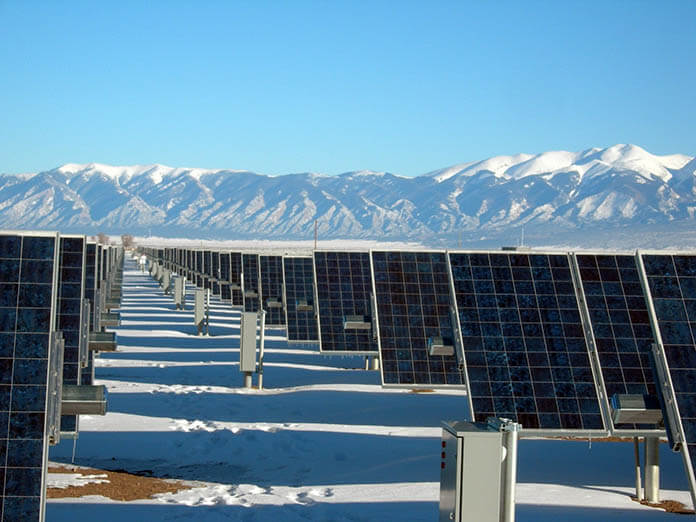
Commencing operations in 2009, Belgium’s Princess Elisabeth Antarctica Research Station runs exclusively on renewable energy. 408 panels were provided by Kyocera Fineceramics GmbH, delivering a total output of around 52.72 kWp, with estimations holding the yearly output would be approximately 45.7 MWh/year. Collectively, this was around one-third of the total electricity needs of the Station, with the rest provided by wind power.
At Australia’s Casey research station, over 100 panels came online during 2019, now making it one of the largest solar installations in Antarctica. Thanks to it, the Station will see a reduction in the use of diesel used via generators.
For Nisha Harris : Media Manager and spokesperson for the Australian Antarctic Division of Australia’s Department of Agriculture, Water and the Environment, the Casey installation is an achievement in and of itself, and also a potential stepping stone for future works.
"We’ve been really delighted by the Casey solar farm coming online. It’s now been in use for over 12 months, and the panels have been a great help in reducing the number of generators we use when the sun is shining."
—Ms. Harris told Solar Magazine.
“Looking forward, we’re actively considering the adoption of battery storage systems, and are now moving to assess how viable large scale PV arrays would be for summer-only Antarctic facilities, such as Wilkins Aerodrome. The challenges for these sites are the large area required for solar arrays and the large variation in the sun’s path at these latitudes, but of course, we are hopeful and working towards these possibilities with real optimism.”
While the existence of solar in Antarctica and its use by (temporary) residents there is unquestionably an achievement, the vast space and months of constant sunlight mean futurologists also look upon it with interest and ponder what could perhaps one day be, especially if a large solar installation could come to serve a community situated beyond Antarctica. But—allowing for the proven ability to overcome the extreme conditions down there—how realistic is this? Cabling is a key consideration.
The length and depth of installations
Although the advance of technology has seen essentially everywhere else in the world become connected via submarine cables, for many years Antarctica’s been the lone holdout. The challenge here has been two-fold. While researchers in residence have been required to make do with internet connection via a satellite that has middling speed, the constant shifting that occurs along Antarctica’s surface, as well as the -50c temperatures, fiber cables could be required to withstand once installed means the costs and logistics of laying cables to overcome these issues have had a chilling effect on progressing telecommunications upgrades.
This is the reality that any mass solar installation in Antarctica devised with a plan to export abroad would encounter. Nobody can foresee all future advances in technology and what innovations may redefine what’s possible, but even looking beyond the climate considerations of Antarctica the distance and current capacity of solar technology is also a factor.
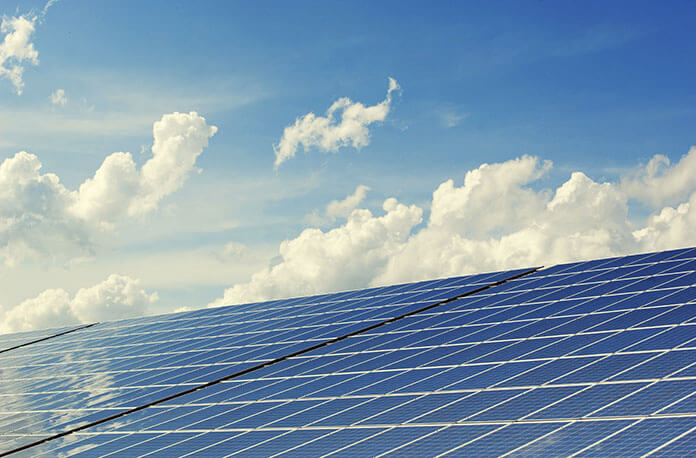
It’s why the plans of Singapore’s SunCable are a do-watch in this regard. Under their plan, a massive solar farm intended to operate in Tennant Creek in the Northern Territory, Australia, would come to export solar-derived energy to Singapore via a 3,800 km undersea cable.
If such a setup is looked back upon in a few years as a great success it shall surely embolden nations to partner on other solar projects, and ones that stretch for longer distances. But even though the shortest distance between Antarctica and its closest “neighboring” continent of South America is around just 1,000 km (depending on whether you’re measuring from Antarctica’s northernmost islands or its more substantial landmass further south) in other sections this balloons out, like the distance between Hobart, Tasmania and Casey Station which is 3,443 km. In turn, any underground cable that did exist between Antarctica and another landmass would also require a backup, and any breakdown of a cable’s operation would require great time and expense to fix, especially if occurring in a remote section of the line.
A smart plan for installation
Just the same as considering this question has required an examination of Antarctica’s history,
such an assessment of Antarctica must also recognize the future. For although humanity is yet to get the hoverboards from Back to the Future or the flying cars of The Jetsons, we are rapidly advancing in the fields of robotics and Artificial Intelligence (AI).
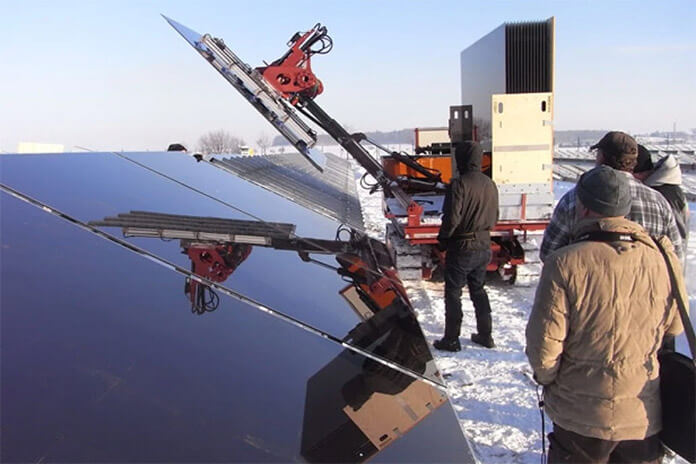
Indeed, firms like Germany’s PV Kraftwerker and Gehrlicher have already made strong inroads in the use of robots in solar installations. If Antarctica were to one day play host to a major solar project, it may not necessarily require a large team of human beings for its labor. This combined with other advances in AI could drive down costs, speed up production time, and increase the feasibility of the project being pursued by one nation, or multiple in partnership.
Yet ultimately, Antarctica’s existence under the current Antarctic Treaty provides no nation the right to lay claim to land outright with previous territorial claims made in the past now suspended. In this regard factoring in the potential future of emerging technology in Antarctica must also come alongside a clear-eyed recognition of the unclear political future of the southernmost continent, especially with a view to 2048.
Territory tensions
In 2048 the current Antarctic Treaty that has suspended territorial claims and kept militarisation at bay will become modifiable. At the current stage—even allowing for the serious strain coronavirus is placing upon nations right now—it’s not expected that if the Treaty became modifiable tomorrow it would by default see all nations in a race for conquest.
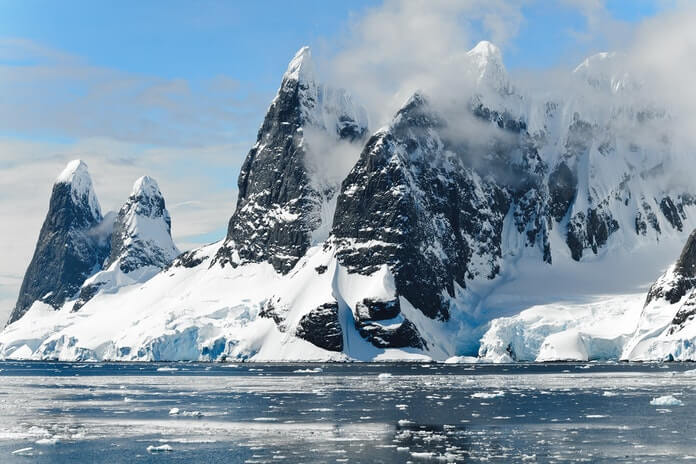
Not the least of which because, though allowing for Antarctica’s vast potential to hold immense resources—with some estimates holding the continent could hold as much as 200 billion barrels of oil—currently the cost of acquiring and transporting them would be far, far higher than those easily available elsewhere. But in 2048 it could be different.
Especially because, beyond the back and forth of simple surface-level territorial disputes about what flag is flown where, even if it’s accepted within this century the world will undoubtedly go greener, it’s also unfortunately expected the transition will be turbulent, with many potential conflicts over increasingly scarce resources like fossil fuels. For anyone wincing at the idea of increased conflict around Antarctica in years ahead, it’s worth noting the more imminent concern may be in the far north.
Projections show the Arctic holds up to 90 billion barrels of oil. While a similar treaty to Antarctica’s limits the capacity of nations to engage in territorial skirmishes, already some limited oil operations have been pursued there, such as Shell’s before it was ultimately abandoned in 2015, and held to have occurred due to a mix of high costs, limited results, and public pressure.
Given the closer proximity of many major oil-producing nations to the Arctic, it can be expected the North Pole instead of the South Pole may see tensions flare around energy resources sooner. The great sadness in this reality is that just like Antarctica, the Arctic shows much promise for future research and potential in solar power adoption.
Antarctica’s energy future: A choice between old or new energy sources?

In looking to the decades ahead, it appears the greatest limitations on greater Antarctic solar uptake may not be simply the limitations of technology but instead the ambitions of humanity. Especially as we look to a 2048 date that does indeed seem many years away now for an average person’s lifetime, but is a blink of an eye when it comes to the back and forth played out in history by nation’s engaged in territorial disputes and hungry for resources.
Although it’s undoubted strong efforts shall be placed behind continuing the prior arrangement of keeping Antarctica military-free, so too is it certain the world in 2048 will look very different from that which we know now. The lead up to it is likely to see tensions around Antarctica grow, and in turn, this could deter the potential to grow solar’s presence in the southernmost continent.
But a serious conversation could be started in this decade about a future of Antarctica as a site of renewable energy research and development in the future that sees it continue to provide value to the international community, and does so without descending into line in the sand territorial aggression.
In turn, although we are not close to the possibility of mass solar in Antarctica now, the rapid advance of solar technology, the current military-free nature of Antarctica, and the expected increase in the need for resources in years ahead mean the old saying “necessity is the mother of invention” may ultimately inform the future of solar in Antarctica. Certainly, it’d be an obscene bet to think such a thing would be the case 1 year from now, and likely even 10, but 50? Or 100?
For those of us hopeful for the ongoing peaceful use of Antarctica whatever shape it may take post-2048, unquestionably further research in the southernmost continent’s potential use as a renewable energy hub is desirable. Especially because greater inroads within the renewable energy space could help counterbalance (or even outright negate) the push by any nation to claim territory in a quest for fossil fuels . An alternative vision would see Antarctica continue to develop as a research hub for renewable energy, and perhaps one day come to serve as a massive renewable energy resource in its own right.
28 April 2020
Solar Magazine


